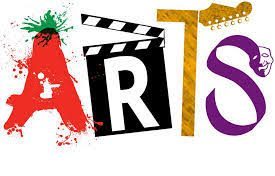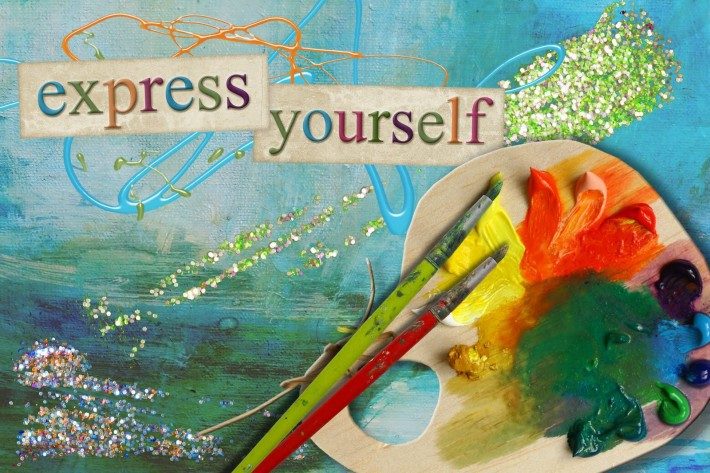Exploring creativity within art is important, with us as teachers to discuss it but also within our classrooms it is vital, we have discussions about it.
“Professional reflection is central to the development of new awareness, knowledge and value shifts which lead to more effective practices in arts teaching.” (Harland, et al., 2005)
In the past self-expression was discouraged in the classroom and creativity has been dismissed. However, continuous-time for reflection means that this can be at the heart of a learners’ creative process.
Creativity within schools engages with the Reggio Emilia approach as they are curious about the world around them and are enabled to show self-expression. Robinson explores how creativity is just as high a status in schools as literacy and it should be explored at the same level. Through a child-directed approach in the classroom, we can engage with the art forms in allowing children to collaborate and work towards different sides of creativity through the arts. Today we explored this through the way children can explore the arts through technology whole opening up their minds to new forms of art. (Reggio Emilla, n.d) (Robinson, 2006)
Firstly today, we explored the program of charanga within a classroom as an online resource for teaching and creating music.
As discussed last time Bloomfield (2012) emphasised the use of ICT as this is a valuable tool to utilise in education and implementing the latest software, which charanga is. This program opened my eyes to how being unconfident in teaching music I can use my digitally literate skills to enable me to teach the whole class music. This resource gives more confidence to non-specialists within education, both teachers and our learners. It is set up to allow all learners to interact with it and engage positively with music.
This resource offers a confidence-building CPD for teachers but also it can ensure “…they are meeting the demands of the curriculum while effectively measuring their students’ progressions, (Charanga, 2019)


Working with this resource can incorporate games into children’s learning to look at the basics of music such as beats and pulses, which can enable children to create their own rhythms. This can build to children who do play instruments bringing them in and playing them in class, but even if not, children can improvise and play an imaginary instrument as they play the beats. These methods can empower children and lead them to feel more confident with music. The music program can look at different paces as the class moves up stages, charanga takes a ‘sound before symbol’ approach meaning you can play the sounds of the music first before actually seeing what it looks like. (Charanga, 2019)
Keeping it simple in music with this resource can allow children to build their confidence and let them lead the method of music. They can build up through time with familiar music and learn the basics at a fun, simple method so they can enjoy music and engage with it appropriately.
In the afternoon we experienced visual arts through making use of form content. By exploring Taylors model of assessment, we could unpack anything within the visual world.
The model gives questions to aid children’s critical thinking of art looking at Process, Form, Content, and mood, asking questions such as: How has the work been arranged, or does it convey feelings about life and nature?

Visual arts have a role in encouraging learners to be more innovative and adventurous in their thinking when responding to art. They are opened to a variety of interpretations and emotional responses as they unlock the “complex layers of meaning, symbols, and metaphors.” (Alter, 2010) As education also discusses how they have the chance to explore the work of artists to enhance their knowledge and understanding of the arts.
Within the workshop, we explored emotional learning cards, something as a teacher I could easily use within my practice and allow children to look deeper into the aesthetic world. Looking into these images we can use our critical thinking skills to further our ideas about how these images make us feel. Working through the form content we could collaboratively work to understand dimensions and ideas about the images as well as open ourselves u to questions, we may ask or that could be asked of the picture.
I can respond to the work of artists and designers by discussing my thoughts and feelings. I can give and accept constructive comment on my own and others’ work.
EXA 0-07a / EXA 1-07a / EXA 2-07a / EXA 3-07a (Scottish Government, 2017)
To incorporate technology into the arts and also our voices over the images we filmed ourselves speaking about the picture in front of us. This increased my confidence in speaking about art and through this discovering deeper meanings and visuals within the image. Speaking about the image developed that tolerance for ambiguity discussed in week one. Within art, this is needed to develop that deeper meaning and connection with art. We can build upon ideas and questions to identify stories and creations we may have not felt at that start. These inquiry-based images opened our minds to multiple stories and interpretations as people built their own stories in their heads and also seen different shapes and ideas. This idea of visual thinking can become cross-curricular as we develop the idea of literacy to learn about art and looking at the different words we can connect to a picture. These word banks helped me identify things I did not think about at the beginning, as the words are not be commonly used by myself but learning new words can broaden my images of art.
Inspired by a range of stimuli, I can express and communicate my ideas, thoughts and feelings through activities within art and design.
EXA 0-05a / EXA 1-05a / EXA 2-05a (Scottish Government, 2017)
For children in a classroom, I could identify the links they could make to real-life experiences they may have had or images they have seen. Making these connections can elevate emotions within and lead to opening doors to new expressions within the classroom but also connecting your words to a picture can open up topical discussions. These can look at things such as immigration or personal emotions of moving.
Linking the two workshops together I identified the role of technology in the arts, as it has a big role already in classrooms in the current age so to bring it into our arts education, can enhance a learners’ experience. Children also respond and engage with these methods in a positive manner as they can relate to it.
References
Charanga (2019) Non-specialists often worry about 3 things when it comes to teaching music. We’ve got them covered! [online] available:https://charanga.com/site/non-specialists-often-worry-3-things-comes-teaching-music-weve-got-covered/[ accessed: 31/10/2019
Scottish Government (2017) Expressive Arts: Experiences and Outcomes[online] available: https://education.gov.scot/Documents/expressive-arts-eo.pdf[accessed: 31/10/2019
Reggio Emilia (n.d.) The Reggio Emilia Approach[online] available: https://www.scholastic.com/teachers/articles/teaching-content/reggio-emilia-approach/[accessed: 31/10/2019
Alter, F., (2010) Using the Visual Arts to harness creativity[online] available: https://www.researchgate.net/publication/228811183_Using_the_Visual_Arts_to_harness_Creativity[accessed: 31/10/2019]
Harland, J., et al. (2005) The Arts-Education Interface: A mutual learning Triangle?Slough: NFER
Robinson, K (2006) Do schools kill creativity? [online] available: https://www.ted.com/talks/sir_ken_robinson_do_schools_kill_creativity/transcript [accessed: 31/10/2019]





















